Originally Posted At: https://breakingmuscle.com/feed/rss
High-quality bumper plates are ideal for home gyms because they’re versatile, less likely to damage your floors, and quieter than cast iron plates. You can’t drop metal weight plates, but you can drop bumper plates because their rubber coverings absorb shock. Bumper plates are more expensive than most cast iron and steel plates since they have extra materials and undergo a longer manufacturing process. However, the benefits of bumper plates for home gym owners often outweigh the higher cost.
Bumper plates come in various styles and are available in a wide range of price points. If you feel overwhelmed with all of the options, don’t fret — we used our experience with different bumper plates and relied on the input of our friends in the fitness community to create a list of the eight best bumper plates. Whether you’re a competitive weightlifter or you lift weights to stay strong and healthy, you can find an option below that works for you.
Our Top Picks for the Best Bumper Plates
- Best Bumper Plates Overall: REP Fitness Black Bumper Plates
- Best Budget Bumper Plates: Titan Fitness Economy Black Bumper Plates
- Best Bumper Plates for CrossFit: Rogue Fitness Echo Bumper Plates
- Best Competition Bumper Plates: Rogue Fitness KG Competition Plates (IWF)
- Best Urethane Bumper Plates: Titan Fitness Urethane Bumpers
- Most Durable Bumper Plates: REP Fitness Hi-Temp Bumper Plates
- Most Accurate Bumper Plates: Eleiko IWF Weightlifting Competition Plate
- Best Crumb Rubber Bumper Plates: Bells of Steel Crumb Bumper Plates
Best Bumper Plates Overall: REP Fitness Black Bumper Plates
REP Fitness Black Bumper Plates
- Weight range: 10 to 45 pounds
- Weight tolerance: One percent
- Materials: Rubber, steel inserts
- Thickness: One to 2.8 inches
Pros
- Can buy them as pairs or in sets of 160 to 340 pounds
- White numbers allow you to identify the weights easily
- Molded hooks on the steel inserts for enhanced durability
- Tested to withstand 12,000 drops from eight feet high
Cons
- Can be expensive
The REP Fitness Black Bumper Plates win our award for the best bumper plates overall due to their high-quality build, accurate weights, and strong performance.
They boast high-density rubber that should look like new even after years of use. REP has tested the plates by dropping them 12,000 times from an eight-foot height. If they can withstand that much abuse, they can easily tolerate garage gym usage.
The rubber has a matte finish to help make them easier to grip if your hands are sweaty or moisture from humidity in your garage accumulates on them. Yet another impressive feature is the hooks on the steel inserts, which mold into the plates to help prevent them from popping off. REP hasn’t disclosed the plates’ Shore A Durometer rating (how bouncy they are) but claims they have a minimal bounce.
What’s especially noteworthy is that the 10-pound plates are one inch thick compared to other 10-pound bumper plates that are only 0.8 inches thick. Most brands recommend not dropping barbells loaded with only 10-pound plates because the plates can easily bend or crack. But since the REP Fitness 10-pound black bumper plates are thicker than most, you can drop them from overhead.
REP’s black bumper plates can be pricier than other brands, especially if you buy them in pairs instead of a set. However, as of this writing, REP offers free shipping on all orders, which helps offset the higher cost of the plates.
I haven’t personally used these weight plates, but they’re popular amongst the community of Street Parking, the online functional fitness programming I follow. Street Parking members praise the plates’ durability and speak highly of REP’s customer service team. If you’re in the market for top-notch bumper plates that will last for years and don’t cost an arm and a leg, the REP Fitness Black Bumper Plates could be for you.
RELATED: Best Barbells for Powerlifting, CrossFit, Olympic Weightlifting, and More
Best Budget Bumper Plates: Titan Fitness Economy Black Bumper Plates
Titan Fitness Economy Black Bumper Plates
- Weight range: 10 to 100 pounds
- Weight tolerance: Three percent
- Materials: Rubber, steel inserts
- Thickness: 25 to 86 millimeters (0.98 to 3.39 inches)
Pros
- Raised plate lip makes it easy to load and unload your barbell
- White lettering and pound markings for quick weight identification
- Can purchase them as pairs or singles or in sets
Cons
- Higher weight tolerance
- May be covered in oil when you first get them
As I’ll discuss below, bumper plates have many benefits. What’s not always so great about them is the price. Because there is so much extra material, they cost more than cast iron plates. If you’ve been trying to find an affordable set of bumper plates so you can put more money towards other high-quality home gym equipment, the Titan Fitness Economy Bumper Plates may be the solution.
As of this writing, they cost anywhere from $1.87 to $2.50 per pound. This price point is much lower than other brands, whose plates start at around $4.00 per pound. Like more premium bumper plates, the Titan Fitness Economy Bumper Plates feature dense rubber and stainless steel inserts. Many cheap bumper plates have aluminum or brass inserts, which tend to pop off more easily. It’s nice to see that Titan managed to find a balance between durability and affordability.
Titan hasn’t provided the durometer rating for the Economy Bumper Plates but states they have a medium bounce. This should help put your mind at ease if you don’t want your weights rebounding too high when you drop them.
The plates have a weight tolerance of three percent, meaning that each one has to weigh within three percent of the listed weight. For home gym owners who train for overall health and wellness, this isn’t a big deal. However, competitive athletes who prefer to be precise when tracking their lifts may want to consider another option.
Another thing to note is that the plates may arrive covered in a layer of grease. Manufacturers sometimes coat their plates in oil during construction, and the oil remains when the plates are packaged and shipped. If your bumper plates arrive this way, you can wipe them with a rag and dish soap to remove some of the grease.
Best Bumper Plates for CrossFit: Rogue Fitness Echo Bumper Plates
Rogue Fitness Echo Bumper Plates
- Weight range: 10 to 45 pounds
- Weight tolerance: One percent
- Materials: Virgin rubber, stainless steel inserts
- Thickness: 0.83 to 2.4 inches
Pros
- Black and white contrast gives them an elegant appearance
- More affordable than a lot of other Rogue Fitness equipment
- Approved for use for the Army Combat Fitness Test (ACFT)
- Three-year warranty on the 25- to 45-pound plates
Cons
- Can’t drop the 10-pound plates when used on their own
- Can’t load the barbell with very heavy weight due to their thickness
I’ve been a member of a couple of different CrossFit boxes, one of which used the Echo Bumper Plates, so I can attest to their quality and ability to withstand daily, heavy use. Whether I was doing the Olympic lifts (the snatch and clean and jerk), the powerlifts (squats, deadlifts, and bench presses), or other common CrossFit movements like thrusters, they performed well.
The raised lip allows for easy loading and unloading of the barbell, which is helpful in CrossFit, where you may have to change weights quickly in the middle of a workout. The plates also look aesthetically pleasing with the contrast of white lettering against the black rubber.
The Echo plates are available in pairs of 10, 15, 25, 35, and 45 pounds, as well as sets of 160, 230, and 260 pounds. Their thickness ranges from 0.83 inches for the 10-pound plates to 2.4 inches for the 45-pound plates. While the 45-pound plates are thinner than many other bumper plates on the market, you can still only fit four to five of them on a barbell, depending on the sleeve length. These plates may not be suitable for super heavy powerlifting workouts since the max weight you can load is less than 500 pounds.
With a Shore A Durometer rating of 88, these Rogue Fitness plates have a medium to low bounce. However, due to their thinner diameter, you can’t drop a barbell loaded with only 10-pound plates. Doing so could cause the plates to crack or bend.
Rogue Fitness equipment tends to be expensive, but the Echo Bumper Plates are one of the brand’s more budget-friendly items. The affordable price is an attractive feature for CrossFitters who want to build a home gym without breaking the bank.
RELATED: Best Kettlebells for CrossFit, Beginners, and More
Best Competition Bumper Plates: Rogue Fitness KG Competition Plates (IWF)
Rogue Fitness KG Competition Plates (IWF)
- Weight range: 10 to 25 kilograms (22 to 55 pounds)
- Weight tolerance: 15 grams
- Materials: High-density rubber, chrome-plated steel disc insert
- Thickness: 1.15 to 2.5 inches
Pros
- Vibrant colors
- Manufactured to International Weightlifting Federation (IWF) standards
- Dead bounce
- Thinner than training bumper plates, so you can fit more weight on the bar
- Rubber flanges around the inserts protect the rest of the plates from excess wear and tear
Cons
- Expensive
For competitive Olympic weightlifters who may want to train with the same equipment used in weightlifting meets, the Rogue Fitness Competition Bumper Plates are a solid choice. Their bright colors conform to the international color-coding system for weight plates. They have a 50.4-millimeter collar opening, so they’ll fit on any Olympic barbell and maintain their hold on the sleeves — you won’t have to worry about them sliding off if you prefer not to use collars.
They boast a disc insert coated with hard chrome that’s unlikely to pop off, even after hundreds of drops. Rubber flanges surround the inserts to prevent metal-on-metal contact when the plates are loaded on a barbell or stored on a rack. The flanges also help protect the inserts and raised lettering on the plates from scuffs and other damage. You can rest assured that these plates will look like new for a long time.
They’re thinner than training plates, which allows elite lifters to fit more plates on the barbell. They have a Shore A Durometer rating of 94, meaning the rubber is harder and offers a dead bounce, so the barbell won’t roll away from you or rebound high when you drop it. The low bounce also reduces friction and helps prevent the plate inserts from coming loose.
Like all competition bumper plates, these Olympic bumper plates are expensive. They undergo stricter manufacturing standards to ensure they conform to IWF standards. Plus, they have a 15-gram weight tolerance, meaning they’re pretty darn close to the stated weights. That attention to detail is great for lifters who want to be as precise as possible with their weights when training, but it requires a higher price tag.
Still, if you want a set of competition bumper plates that can handle frequent drops and high-volume training, you can’t go wrong with these Rogue bumper plates.
Best Urethane Bumper Plates: Titan Fitness Urethane Bumpers
Titan Fitness Urethane Bumper Plates
- Weight range: 10 to 55 pounds
- Weight tolerance: One percent
- Materials: Urethane, chrome-plated steel disc insert
- Thickness: 24 to 56 millimeters (0.94 to 2.2 inches)
Pros
- Bright colors with contrasting gray numbers
- Thinner than standard bumper plates to allow you to fit more plates on the barbell
- Textured surface and raised lip make them easy to carry around
Cons
- No 15-pound plate available
- 10-pound plate is shorter than the heavier ones
Urethane is a durable type of rubber known for its ability to withstand exposure to weather and not crack when used on rough surfaces. Urethane bumper plates like the ones from Titan Fitness are a solid choice if you train outside or work out with other people often because they can handle nearly anything you put them through.
Another advantage is that if you get colored urethane bumper plates, the colors should remain vibrant for years. Plus, the plates have a dead bounce since urethane is a harder rubber. A minimal bounce will put less wear and tear on the plates’ inserts, and the weights will make less noise when you drop your barbell.
Many companies sell urethane plates, including popular brands like Rogue Fitness and American Barbell. However, they get them from the same few manufacturers. The brands then slap their logos on them and sell them at various prices. Regardless of who you buy them from, they almost always cost more than regular bumper plates because urethane is an expensive material.
That said, Titan offers some of the lowest prices on its urethane plates, and we recommend going with this brand if you want these types of weights. You’ll get the same quality and durability as you would from the more expensive companies.
Most Durable Bumper Plates: REP Fitness Hi-Temp Bumper Plates
REP Fitness Hi-Temp Bumper Plates
- Weight range: Five to 45 pounds
- Weight tolerance: Guaranteed to within 0.5 pounds
- Materials: Recycled, vulcanized rubber; stainless steel insert
- Thickness: One to 3.75 inches
Pros
- Environmentally friendly
- Made in the US
- Can be used indoors or outdoors
- Suitable for high-traffic gyms
Cons
- May have a strong odor when you first get them
- Can’t fit many plates on the barbell
- High and unpredictable bounces when you drop them
Like urethane plates, most fitness companies that sell hi-temp plates get them from the same factory (the Hi-Temp factory in Tuscumbia, AL), put their brand’s logo on them, and sell them directly to consumers. We recommend purchasing hi-temp bumper plates from REP Fitness because REP sells them for a reasonable price — starting at around $2.40 per pound — and offers free shipping on all orders as of this writing. Free shipping is a big deal since other brands may charge $50 or more to ship their bumper plates, depending on where you live.
The REP Fitness hi-temp plates are some of the most durable bumper plates you can buy. They’ll last through frequent drops on concrete and heavy usage in high-traffic gyms. Environmentally-conscious buyers will also appreciate that the plates are made with recycled rubber.
The plates have a few disadvantages. For one, the recycled rubber is softer than the virgin rubber used in standard bumper plates. The plates bounce much higher and more unpredictably, so you have to be extremely careful when dropping them in a small space. They can also have a strong rubber smell when you get them, and you may need to air them out for a few days before you can use them if the odor bothers you.
Still, buying hi-temp bumper plates from REP may be the right decision if you train outdoors frequently and don’t want to worry about the rubber deteriorating.
Most Accurate Bumper Plates: Eleiko IWF Weightlifting Competition Plate
Eleiko IWF Weightlifting Competition Plates
- Weight range: 10 to 25 kilograms (22 to 55 pounds)
- Weight tolerance: 0.05 percent
- Materials: SBR rubber; zinc-steeled insert
- Thickness: One to 3.75 inches
Pros
- IWF-certified
- Large raised lip
- 10-year warranty
- Thin profile
- Tested to hold up to 100,000 drops
Cons
- Expensive
- Sold individually
If you want to ensure your weights are as precise as possible, you won’t find more accurate plates than the Eleiko IWF Weightlifting Competition Plates. They have a 0.05-percent weight tolerance, the lowest we’ve seen on any set of bumper plates.
Another thing that impresses us is their slim profile. The heaviest plate is 2.28 inches thick, almost 70 percent thinner than some regular bumper plates on the market. You can load a 15-kilogram barbell with up to 215 kilograms (473 pounds) and a 20-kilogram barbell with up to 290 kilograms (638 pounds). They also have a larger raised lip than other bumpers, so you shouldn’t struggle much when loading and unloading all of those plates.
These are high-end plates meant for serious weightlifters or elite training facilities. Eleiko sells them individually, and one plate starts at around $27 per kilogram. But they’re nearly indestructible. They’re made with SBR, a synthetic rubber known for its abrasion resistance and longevity. Eleiko tested them by dropping them 100,000 times, and the plates survived.
Additionally, to prove that Eleiko stands behind its competition plates, it offers an unmatched 10-year warranty on them. If you have the budget available and never want to worry about replacing your bumper plates, these plates can be a great addition to your gym.
Best Crumb Rubber Bumper Plates: Bells of Steel Crumb Bumper Plates
Bells of Steel Crumb Bumper Plates
- Weight range: 10 to 55 pounds
- Weight tolerance: One percent
- Materials: Crumb rubber, stainless steel insert
- Thickness: 0.8 to 3.9 inches
Pros
- Inserts have three anchor points to prevent them from coming off
- Can buy in pairs or in sets up to 520 pounds
- Color flecks for easy weight identification
- Reasonably priced
Cons
- Can’t drop the 10-pound plates on their own
- May have a strong rubber odor when you first get them
The Bells of Steel Crumb Bumper Plates are another excellent option for those who train outdoors. Made of recycled rubber, they’re softer than other bumper plates but still quite durable. You can purchase them in pairs from 10 to 55 pounds or mix and match various pairs to create a custom set, which is handy if you know the specific amount of weight you need.
The Bells of Steel crumb bumpers are black but have color flecks that correspond to the international color-coding system. The 55-pound plates have red flecks, the 45-pound plates have blue flecks, and so on. We also like that they’re slimmer than some of the competition. For example, the 45-pound plate is just 3.1 inches, at least half an inch thinner than other crumb or hi-temp bumper plates of the same weight. You’ll be able to fit more plates on the bar before you run out of room.
You can’t drop the 10-pound plates if they’re the only plates on the barbell because they may bend and become unusable. This isn’t an issue that’s unique to Bells of Steel, though. The plates may also have a strong rubber smell when they arrive. However, it should dissipate after a few days if you leave them outside to air out.
How We Chose the Best Bumper Plates
There’s no shortage of bumper plates on the market, so we made it our mission to narrow down the options to the eight best products. The bumper plates on the list above include ones we’ve used ourselves or come highly recommended by other fitness enthusiasts we know. We also only chose brands we know are reputable, have good customer service, and stand behind their products.
Factors such as price, durability, and training style also went into our decision-making. We recognize that everyone has different budgets and that most people can’t afford to replace weight plates often. The ones on our list should last for at least a couple of years in home gym settings. Some products may even last for years in commercial gyms, where they take more abuse. We also considered that everyone has different goals and included bumper plates that are suitable for competitive athletes, recreational lifters, CrossFitters, and more.
Benefits of Bumper Plates for Home Gyms
For almost anyone who trains in a home gym, bumper plates are the way to go. They have several advantages over steel or cast iron plates that make them an excellent choice for home gyms:
- They are quieter than metal plates. A barbell loaded with bumper plates won’t be completely silent when you drop it, but it will make fewer clanging noises and cause fewer vibrations than if you had iron plates on it.
- They may cause less damage to your floor. Bumper plates can prevent damage to your floor because the rubber absorbs shock and bounces when you drop them. I’ve used bumper plates on the cement floor in my garage for years with nothing except a ¼-inch thick mat covering the floor. I’ve been fortunate to have never caused any cracks in the garage floor. However, I should mention that the highest I drop my weight from is about knee height, and that is only when I know I’m not going to complete a deadlift rep. If I plan on dropping my weights from overhead, I use crash pads.
- They are durable. The rubber surrounding a bumper plate’s core leaves very little metal uncovered. They can withstand exposure to moisture and be dropped on concrete without chipping.
- They have the same diameter, regardless of weight. Bumper plates all have the same diameter, generally 17.72 inches, whether they weigh 10 or 55 pounds. Conversely, iron plates have different diameters, with the lighter weights being several inches smaller than the heavier ones. Loading the bar with 10-pound metal plates means you’d have to bend over further to grip the bar for lifts like deadlifts or cleans, potentially putting your lower back in a compromising position. Because bumper plates have a uniform diameter, you won’t have to lift the barbell from a deficit even if you load it with lighter weights.
- They are safer to lift with when you don’t have a spotter. If you work out at home, chances are that you train by yourself often. Solo training may make you more hesitant to attempt new PRs, especially if you use squat stands instead of a power rack. You may feel more confident using bumper plates knowing you can drop the weight if needed without causing significant damage to your floor.
Are Bumper Plates Harder to Lift?
Bumper plates are not harder to lift — they can actually make your lifts feel easier! It’s not because bumper plates are lighter, though. A 45-pound metal plate and a 45-pound bumper plate weigh the same. However, bumper plates have more volume due to their rubber coverings. Therefore, they take up more space on a barbell’s sleeves. This places the weight further away from your center of gravity (in this case, your hands) and allows for more whip (bending of the bar) to occur, resulting in a lift that feels lighter.
What To Look For When Buying Bumper Plates
Before you jump online and start searching for bumper plates, consider the criteria below to determine the right ones for your needs.
Type of Bumper Plate
One of the first things you should do when shopping for a bumper plate set is to narrow down which type of bumper plate you want. Doing so will dictate several of the other important factors discussed below.
You’ll typically find four different types of bumper plates on the market:
- Standard bumper plates – Standard bumper plates usually made consist of all-black rubber. They’re common in commercial gyms, especially CrossFit gyms, but many home gym owners opt for them as well. Standard bumper plates range in thickness from 0.75 to around 3.4 inches, with the thickness increasing as the weight goes up. They have a low to medium bounce.
- Competition bumper plates – These are the plates you’ll see used in weightlifting competitions. The color bumper plates allow judges, coaches, and audience members to count how much weight is on the bar when an athlete attempts a lift. They’re often calibrated to be within 0.15 percent of the listed weight. They have a dead bounce and are thinner than standard bumper plates, with the heaviest plate being up to 2.15 inches thick. Thinner plates allow elite athletes to fit as much weight on the bar as possible.
- Crumb bumper plates – Crumb bumper plates are also known as hi-temp bumper plates. They are made from softer, recycled rubber and bounce higher than any other type of bumper plate. Their thickness ranges from about 0.8 inches for 10-pound plates and can go up to four inches for 55-pound plates.
- Urethane bumper plates – Urethane is a highly durable type of rubber. It tends to bounce less than regular rubber, making urethane bumper plates ideal for those who train in cramped spaces. However, they tend to make more noise when dropped since they don’t bounce as high. They’re even thinner than competition plates, making them ideal for super heavy squats or deadlifts, as you can fit more plates onto the barbell.
Price
Bumper plates range in price from just over $2.00 per pound to more than $6.00 per pound. Urethane and competition bumper plates are the most expensive. Urethane is a premium material that costs more than regular rubber, and competition bumper plates have to meet strict standards and have a low weight tolerance. Crumb bumper plates are more affordable because the rubber is less dense and not as high-quality as urethane or virgin rubber.
Most brands sell bumper plates in sets, which can be more cost-effective than buying multiple pairs of plates. However, you may not get the exact ones you want or need. The 160-pound set of REP Fitness Black Bumper Plates, for example, includes one pair each of 10, 25, and 45-pound bumper plates. If you wanted two pairs of 10-pound plates, you’d have to buy one pair separately.
Bounce
Bumper plates have different levels of bounce, depending on the type of rubber used and their intended use. Crumb bumper plates, like the Bells of Steel Crumb Bumper Plates, bounce much higher than competition plates, for example, because the rubber is softer.
The bounce is important to consider, especially when it comes to protecting your home and other gym equipment.
You can determine how bouncy your desired bumper plates are by searching the brand’s website for a Shore A Durometer rating. A shore durometer is a device that measures the hardness of a material on a scale of 0 to 100. The lower the number, the softer the material.
The Shore A Durometer rating for bumper plates generally falls between 70 and 95. I recommend a rating of at least 88 for most home gyms. The plates will have some bounce, which can help protect your floors from significant damage. They may also produce less noise when you drop the barbell, so you won’t irritate other people in your home. However, they won’t be so bouncy that you have to worry about the barbell rebounding too high and hitting you in the face.
That said, hi-temp bumper plates with a durometer rating of around 75 may be better for outdoor training. They will bounce higher but won’t become damaged as quickly when used on concrete.
Materials and Durability
The materials of bumper plates affect their durability. Bumper plates are encased in rubber, but as hinted above, the type of rubber varies. You can choose from virgin rubber (which is what most standard and competition bumper plates are made of), crumb rubber (recycled rubber), or urethane (a very durable rubber).
Bumper plates made with virgin rubber are suitable for most lifters who train indoors. Athletes who train outdoors often may want to go with crumb bumpers because they can withstand drops on rough surfaces, such as concrete, better than standard bumpers can. They also hold up well when exposed to extreme weather conditions, and their affordable price point is attractive to budget-conscious lifters.
For ultimate durability, you may want to go with urethane weight plates. Urethane is more weatherproof and abrasion-resistant than other types of rubber, and if you get colored urethane plates, you can expect them to remain vibrant for a long time.
Thickness
If you’re set on buying bumper plates and can lift some serious weight, you’ll need to be mindful of the plates’ thickness. Forty-five or 55-pound plates can be more than four inches thick, limiting the number of plates you can fit on your barbell. Competition or urethane weight plates may be better options because even the heaviest plates are only about two inches thick.
Warranty
Bumper plates are durable but not indestructible. The inserts can become loose over time, or the rubber may crack. Look for brands whose bumper plates come with a warranty of at least one year. You can save a significant amount of money by taking advantage of a warranty if your bumper plates become damaged due to manufacturer defects.
Weight Tolerance
Weight tolerance refers to how accurate the weight of a bumper plate is to its stated weight. Bumper plates intended for home gym use generally have a three-percent weight tolerance. This means that a 45-pound plate may weigh 43.65 pounds.
For casual lifters, this high of a weight tolerance isn’t super important. However, competitive weightlifters may want to look for calibrated bumper plates with weight tolerances of one percent or less, like the Rogue KG Competition Bumper Plates. The weights used in training will feel much more similar to the ones used in competition.
Colors
Most bumper plates are black rubber, though competition plates come in various colors that indicate their weight. They follow the same color-coding system:
- Red – 25 kilograms/55 pounds
- Blue – 20 kilograms/45 pounds
- Yellow – 15 kilograms/35 pounds
- Green – 10 kilograms/25 pounds
Black bumper plates are sufficient for most home gyms and will cost less than colored bumpers. If you’re a competitive Olympic weightlifter, splurging on color-coded bumper plates may be worth it, as they’ll more closely resemble the plates you’ll lift with at a weightlifting meet.
Final Thoughts
Even though bumper plates cost more per pound than iron plates, they have advantages that may make them a better choice for home gym owners. They’re safer on your floors if you have to drop your weight, and they don’t make as much noise. And they’re durable and can withstand things like exposure to moisture — a plus if your garage gym isn’t temperature-controlled or you like to train outdoors.
You have a variety of options to choose from, including black vs. colored bumper plates and virgin vs. recycled rubber. Use the guide above to help narrow down your list, and you’ll be well on your way to making gains from the comfort of your own home.
FAQs
The advantages of bumper plates include better protection for your floors and equipment, reduced noise when dropped from overhead, and durability — you can use many bumper plates indoors or outdoors without worrying about them rusting or cracking. Bumper plates are also versatile and can be used for CrossFit, strength training, Olympic weightlifting, and more.
Bumper plates have a steel or iron core and a thick virgin or recycled rubber covering. Some bumper plates are covered with urethane, a different type of rubber known for its durability and sturdiness. Bumper plates also feature a thin metal insert or a larger metal hub, both of which are typically made of steel.
Competition bumper plates are only worth it if you compete in Olympic weightlifting. They are much more expensive than regular bumper plates, and most non-competitive lifters can get away with the standard black bumper plates. However, you may want to consider competition plates if you can lift more weight than you can fit on a barbell with standard bumper plates because competition plates have a thinner profile.
Bumper plate quality matters because it determines their longevity and durability. Bumper plates made with cheap rubber and inserts made of lesser-quality materials like aluminum or brass won’t last as long. The rubber will be more prone to bending or cracking, and the inserts can pop off. Buying a high-quality set of bumper plates will help ensure they last for several years.
The post Best Bumper Plates for CrossFit, Competitive Weightlifting, and More appeared first on Breaking Muscle.
Filed under: Fitness

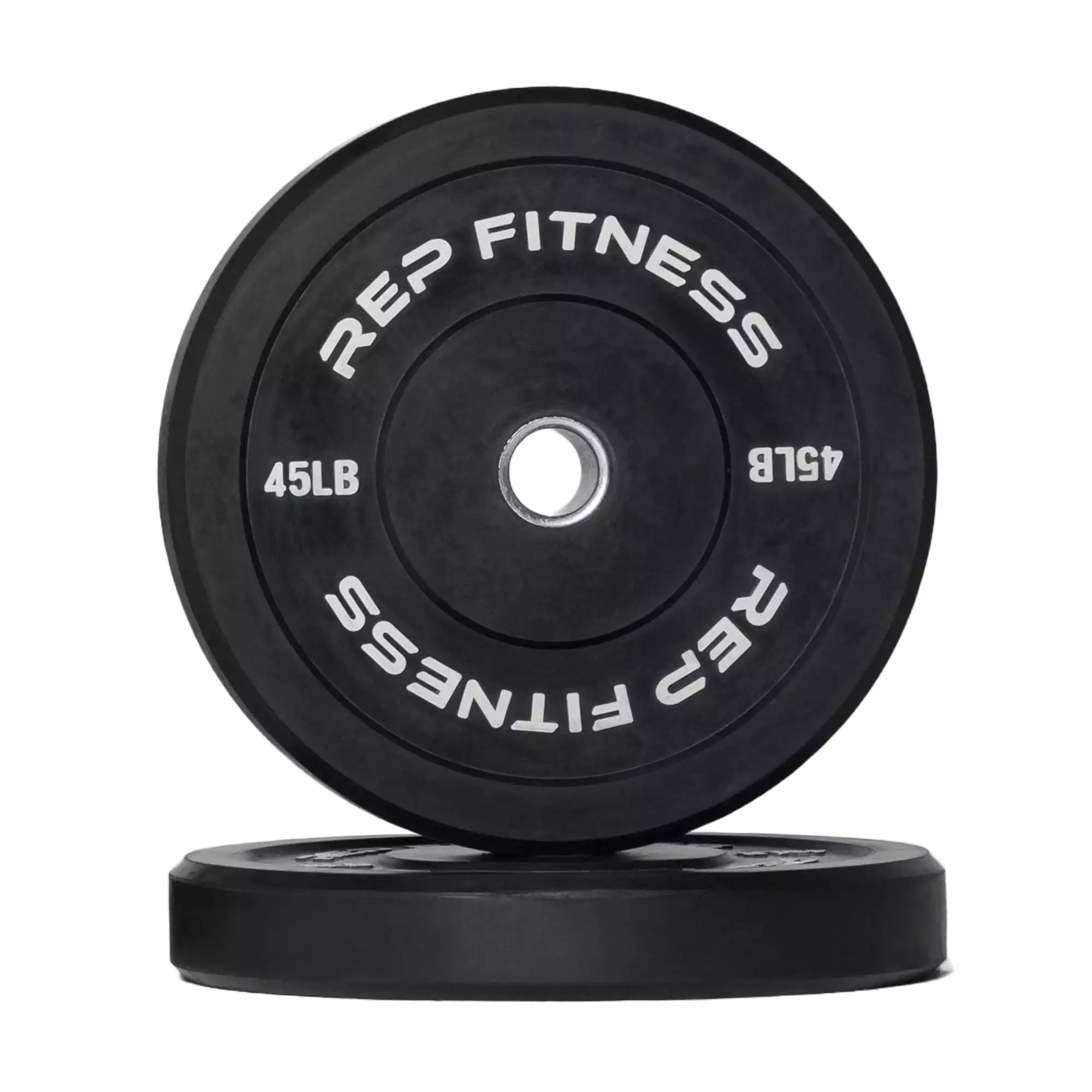
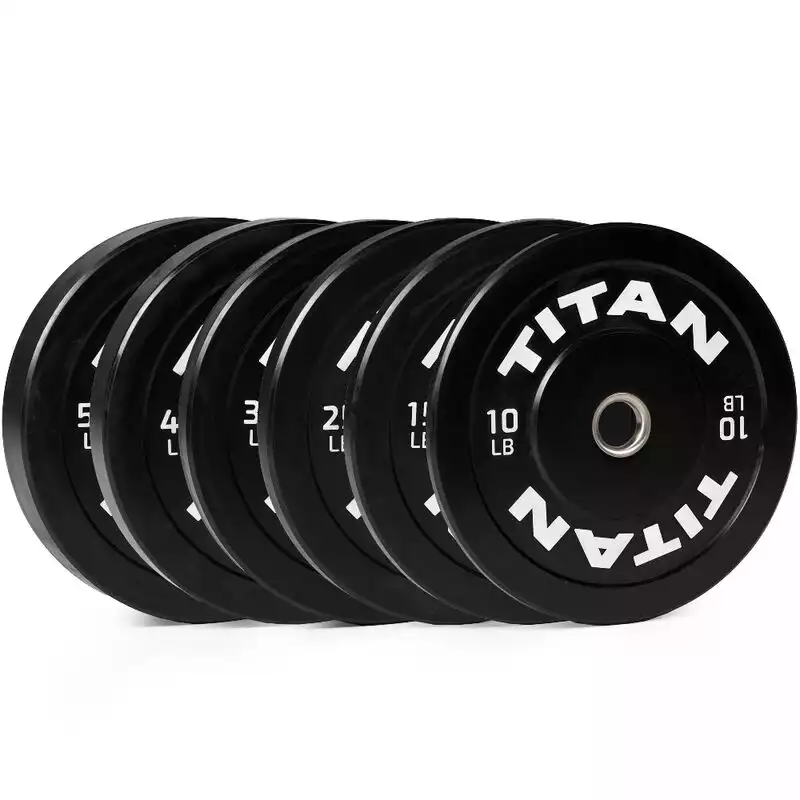
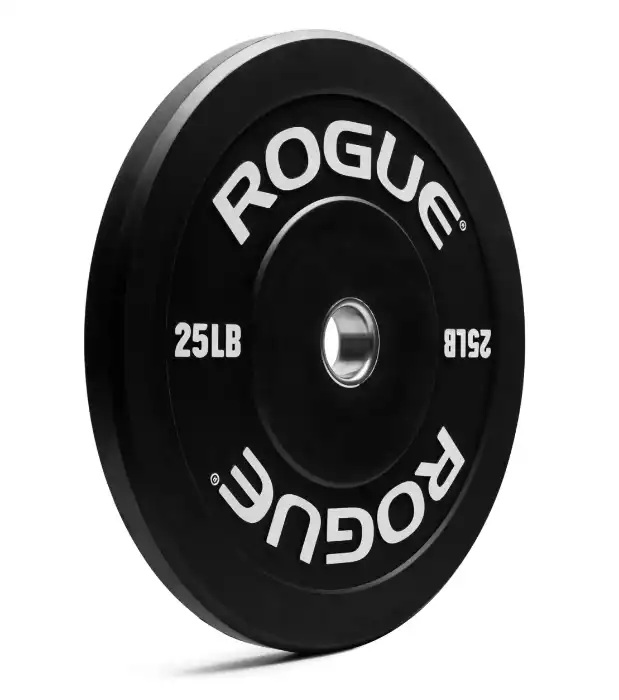
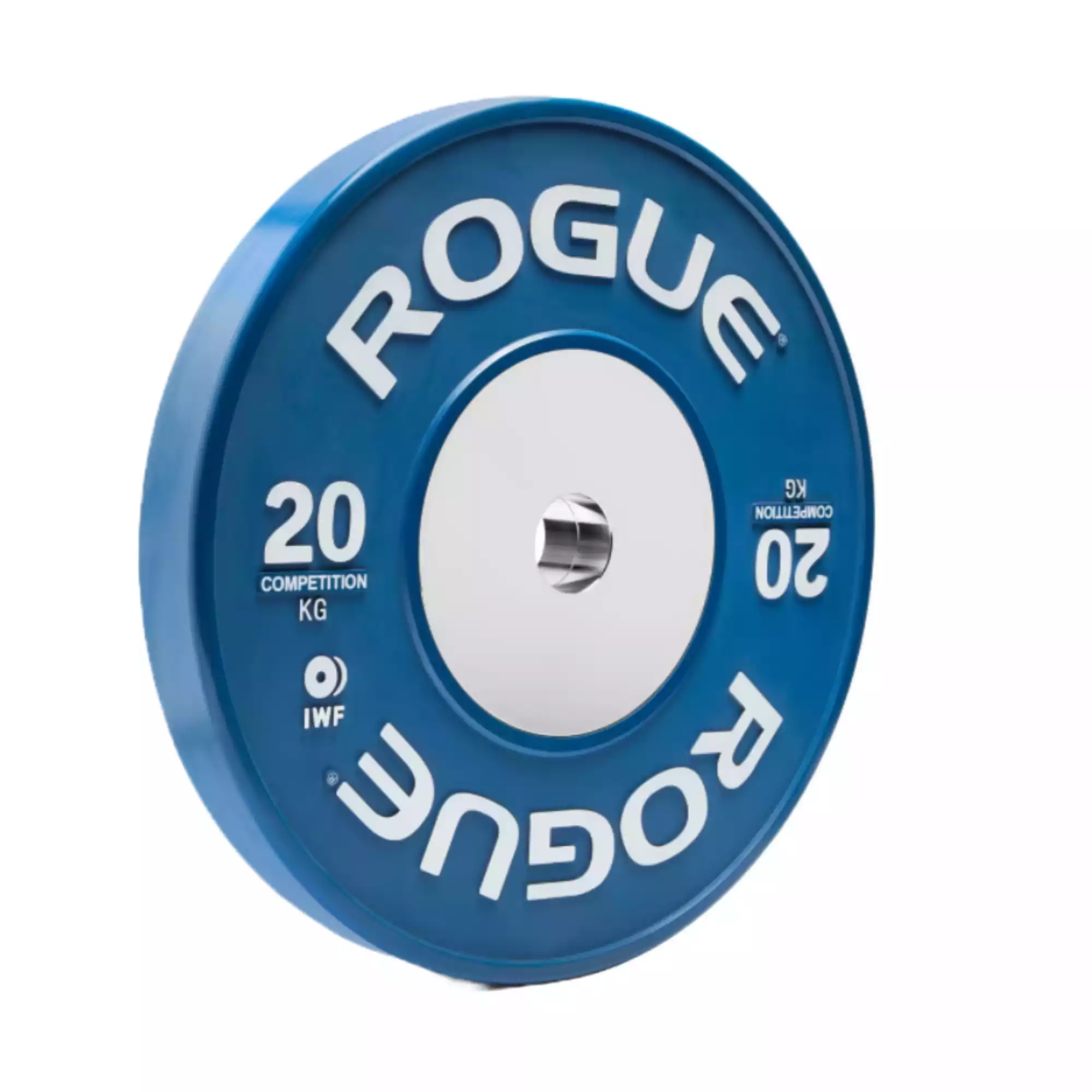
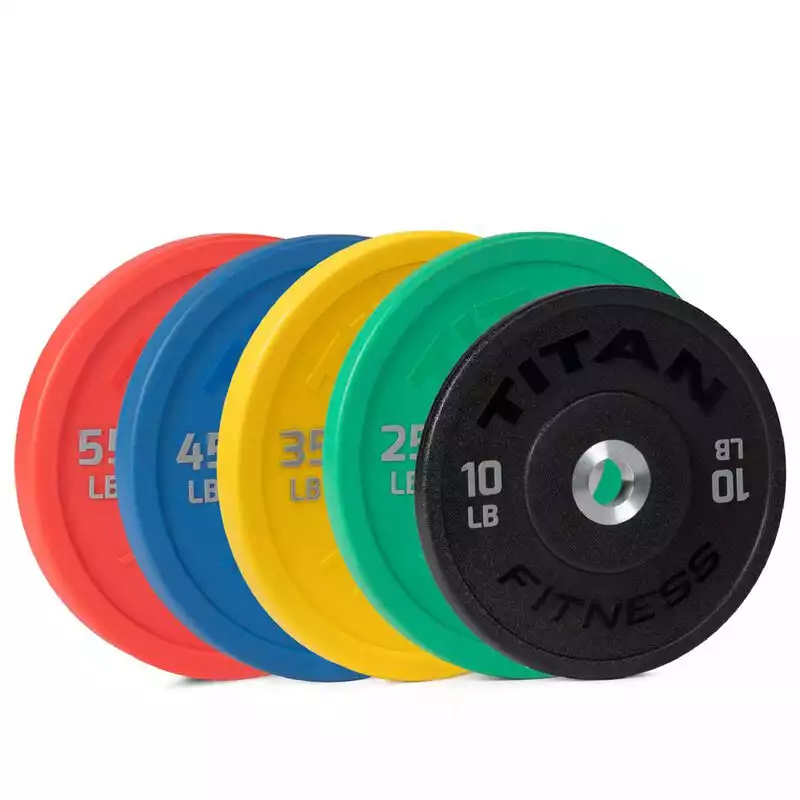
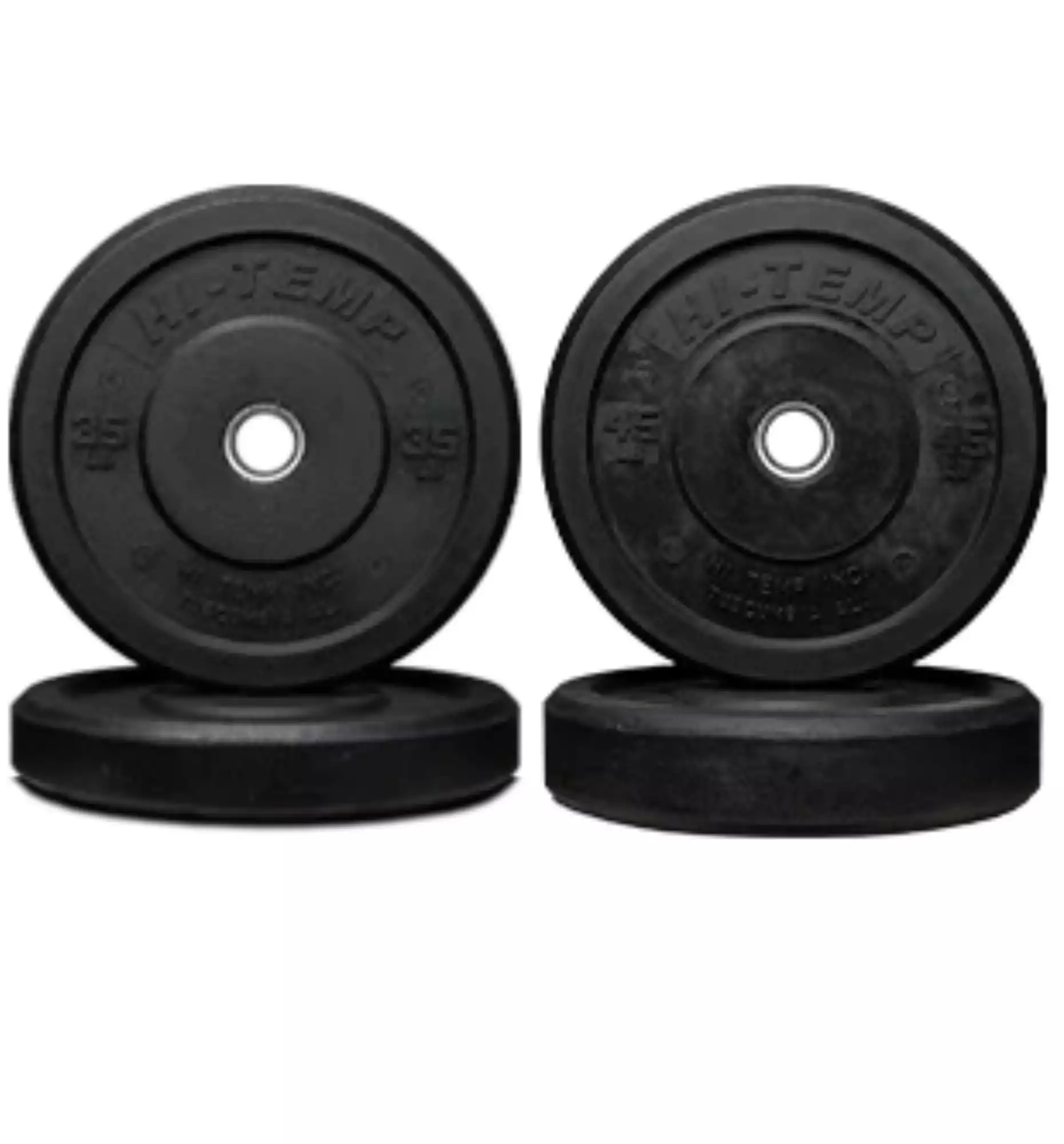
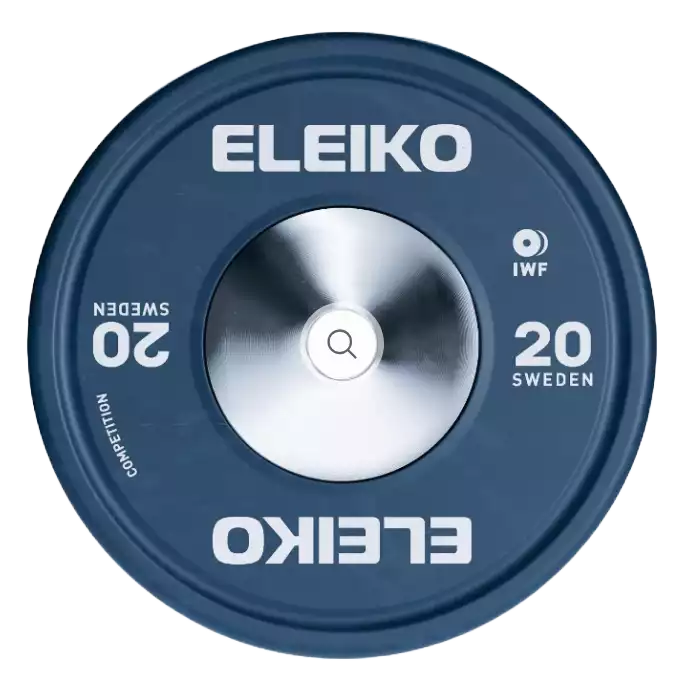
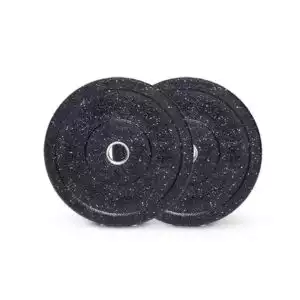
 For now classes are 6pm and 640pm at 2840 Wildwood st in the Boise Cloggers studio.
Book your class NOW!
click this ==>
For now classes are 6pm and 640pm at 2840 Wildwood st in the Boise Cloggers studio.
Book your class NOW!
click this ==>








